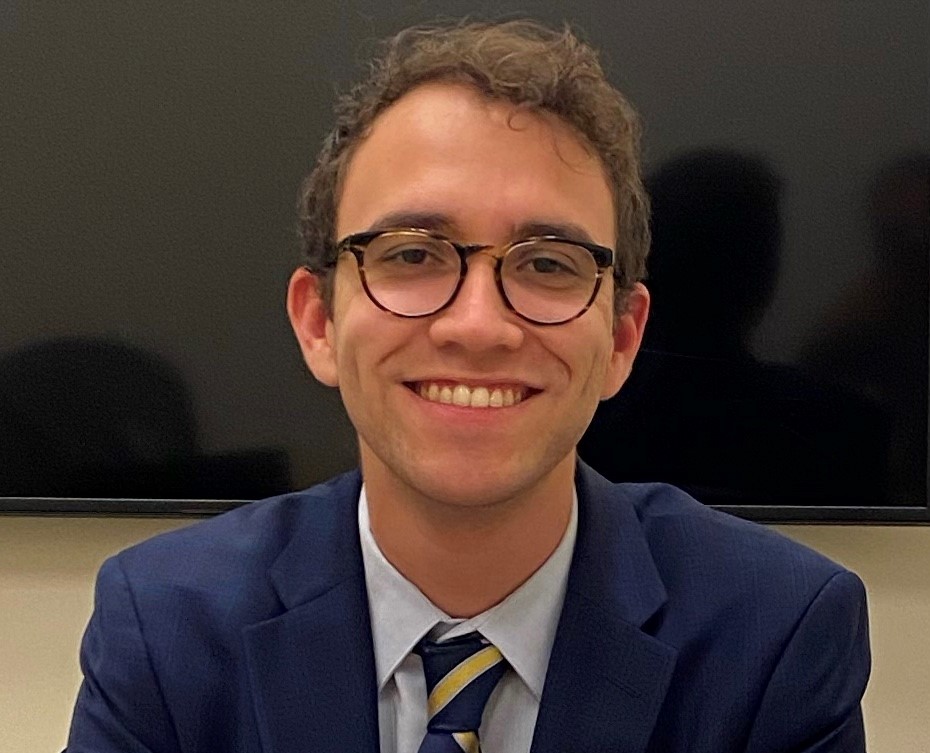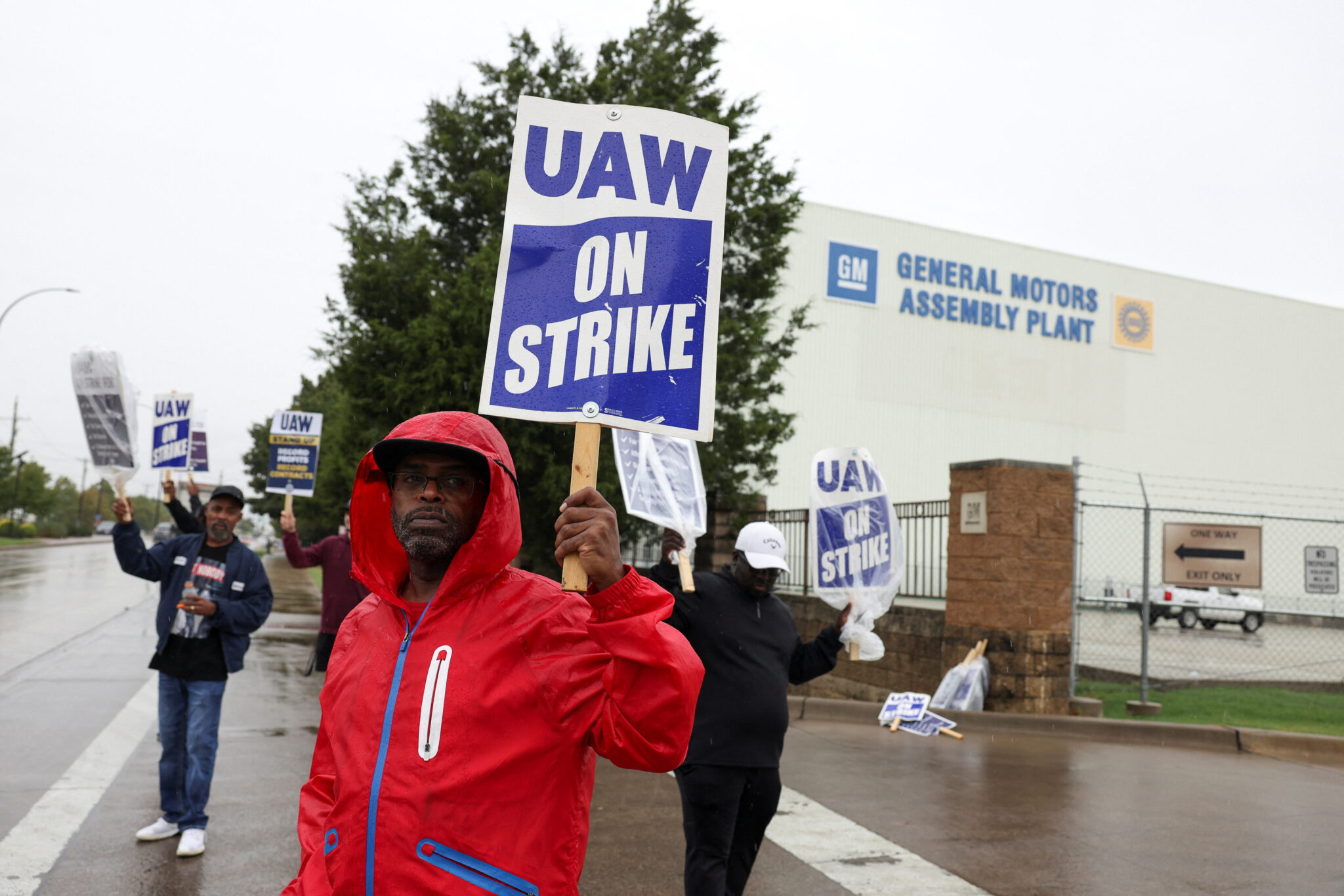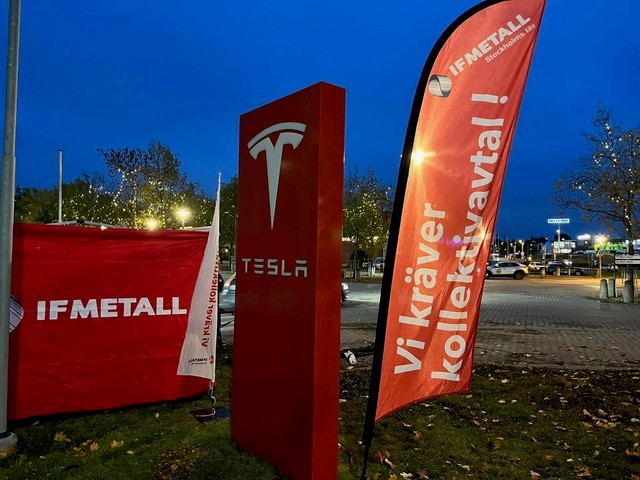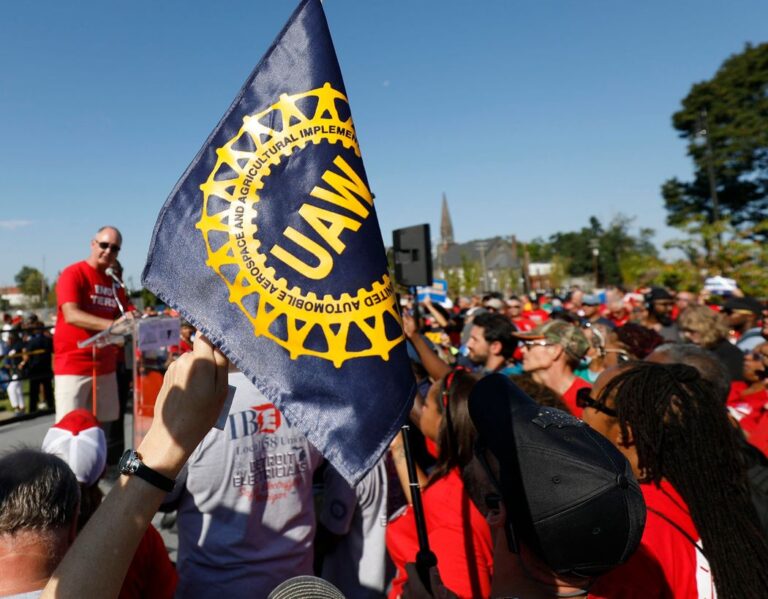
Ian Kalil is a student at Harvard Law School and a member of the Labor and Employment Lab.
2023 went from having the “Summer of Strikes,” or “Hot Labor Summer,” to earning the title “The Year of the Strike.” Roughly 450,000 workers participated in over 300 strikes in the United States this year. As of September 18th, strikes have resulted in 7.4 million missed working days in 2023 – the highest rate of striking in the 21st century. Over the same period in 2022, strikes resulted in only 636 missed working days.
In addition to traditional demands for better wages and working conditions, unions made a plethora of demands this year that aim to address technological advancement, economic realities, and broader social issues. Here’s a look at the innovative demands striking workers advanced across the country and the economy.
United Auto Workers Make Electric Demands
- The United Auto Workers strike against Ford, General Motors, and Stellantis began on September 15th and came to a close in mid-November with the ratification of a new agreement. Around 34,000 of UAW’s 146,000 members went on strike across 44 facilities. The shift to electric vehicle production is expected to result in plant closures and changes in the kinds of work needed at factories.
- The union asked for the right to strike over plant closures and implementation of the Working Family Protection Program. In the event of a plant shutdown, the program would require companies to pay workers to do community service in the affected community. UAW also demanded a four-day, thirty-two hour work week following in the footsteps of the labor unions that drove adoption of the forty-hour work week. While a thirty-two hour work week has been shown to increase productivity, it may also have the effect of creating more jobs as employers fill scheduling gaps.
- The final agreements included the right to strike over plant closures and, for the first time, the right to strike over product and investment commitments. The union also won the right to cover workers in new EV-battery plants. While the four-day work week and Working Family Protection Program did not survive negotiations, they may appear again when the contracts expire in 2028.
Southern California Hospitality Workers Seek Housing Aid
- Hotel workers in Southern California have been engaged in a series of strikes since the summer. The cost of living in Los Angeles has forced hospitality workers to live further and further from their places of employment. In an interview with NPR, Brenda Mendoza, a JW Marriott Hotel employee of fourteen years, described how she is forced to commute two to three hours each way to get to work. She had to move almost 100 miles north of her workplace after her rent for a two-bedroom apartment reached $3000 a month, the average in L.A.
- Unite Here Local 11, the union representing the hotel workers, has asked for a hospitality workforce housing fund that would be funded by a 7% fee on all guest rooms that could replace existing service fees. The fund would then be used to construct affordable housing or for low-interest emergency loans to help workers when they are behind on rent. The union has also asked the hotels to support a city ballot measure that would require hotels to rent vacant rooms to unhoused Los Angeles residents and proposed expanding the joint labor-management cooperation trust fund.
- Unite Here Local 11 has reached tentative agreements with six Los Angeles hotels so far. The details of these agreements have not yet been made public and bargaining remains ongoing as of December 12th.
Kaiser Permanente Healthcare Workers Expand Education Access
- Following the largest documented strike of U.S. healthcare workers, the Coalition of Kaiser Permanente Unions reached a tentative agreement with its employers on October 13th. Kaiser Permanente is a healthcare consortium that operates 39 hospitals and more than 700 medical offices.
- The agreements aim to reduce staffing shortages that have strained healthcare workers. Based on data from the Bureau of Labor Statistics, the American Academy of Nursing Colleges suggests that 200,000 nursing positions will need to be filled each year through 2031.
- The unions agreed to streamline the process for internal bidding on open positions, and the contract includes provisions for training new healthcare workers. The agreement includes a $100 million investment in Futuro Health to fund expansion into Colorado. Futuro Health, which was created by the 2019 contract negotiations between healthcare workers and Kaiser Permanente, is a not-for-profit organization that offers access to training and credentialing through accredited education providers like community colleges, universities, and technical programs for many different healthcare positions. It provides tuition-free education through a combination of scholarship and federal need-based financial aid.
WGA Curbs the Threat of Generative AI
- The Writers Guild of America strike came to an end in late September after 148 days. WGA and the Alliance of Motion Picture and Television Producers have reached a tentative deal on the Minimum Basic Agreement (MBA), the collective bargaining agreement that sets the terms for WGA members.
- The WGA strike came just five months after the release of ChatGPT, a major advancement in the field of generative AI. GAI systems can be trained on existing content and then used to generate new content, like essays, books, and scripts. This poses a threat to writers whose previous work could be used to train the AI that would replace them.
- The tentative agreement includes guidelines regulating the use of artificial intelligence (AI) in MBA-covered productions:
- AI cannot write or rewrite any literary material.
- AI-generated material cannot be considered source material.
- Studios cannot require a writer to use AI software, but a writer may use AI to help their work.
- Studios must inform writers if any of the materials they receive are AI-generated or contained AI-generated material.
- WGA “reserves the right to assert that exploitation of writers’ material to train AI is prohibited by MBA or other law.”
SAG-AFTRA Brings Background Actors to the Forefront
- The Screen Actors Guild – American Federation of Television and Radio Artists (SAG-AFTRA) strike lasted from July 14th to November 9th. SAG-AFTRA, which represents approximately 160,000 media professionals, demanded protections against the use of artificial intelligence.
- At present, the use of AI-generated images threatens background actors, or extras, the most. According to Duncan Crabtree-Ireland, the chief negotiator for the union, studios want to scan background actors and then use artificial intelligence to place those actors in other projects without consent.
- The tentative agreement requires that a producer obtain “clear and conspicuous” consent from a background actor in order to create a digital replica of the actor and generally imposes consent requirements for any digital replication and use thereof. If the digital replica is used in place of the background actor, the actor must be paid for each day of production replaced by the use of the digital replica. A producer may not use the digital replica in connection with a different motion picture unless the producer obtains consent from the actor and separately bargains for the use. The agreement has been criticized on many fronts including for failing to provide sufficient protection against the replacement of acting jobs by artificial intelligence.









Daily News & Commentary
Start your day with our roundup of the latest labor developments. See all
July 4
The DOL scraps a Biden-era proposed rule to end subminimum wages for disabled workers; millions will lose access to Medicaid and SNAP due to new proof of work requirements; and states step up in the noncompete policy space.
July 3
California compromises with unions on housing; 11th Circuit rules against transgender teacher; Harvard removes hundreds from grad student union.
July 2
Block, Nanda, and Nayak argue that the NLRA is under attack, harming democracy; the EEOC files a motion to dismiss a lawsuit brought by former EEOC Commissioner Jocelyn Samuels; and SEIU Local 1000 strikes an agreement with the State of California to delay the state's return-to-office executive order for state workers.
July 1
In today’s news and commentary, the Department of Labor proposes to roll back minimum wage and overtime protections for home care workers, a federal judge dismissed a lawsuit by public defenders over a union’s Gaza statements, and Philadelphia’s largest municipal union is on strike for first time in nearly 40 years. On Monday, the U.S. […]
June 30
Antidiscrimination scholars question McDonnell Douglas, George Washington University Hospital bargained in bad faith, and NY regulators defend LPA dispensary law.
June 29
In today’s news and commentary, Trump v. CASA restricts nationwide injunctions, a preliminary injunction continues to stop DOL from shutting down Job Corps, and the minimum wage is set to rise in multiple cities and states. On Friday, the Supreme Court held in Trump v. CASA that universal injunctions “likely exceed the equitable authority that […]